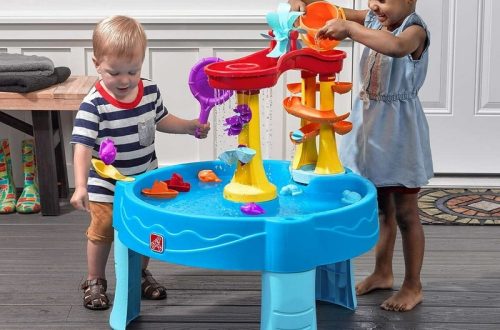Introduction
Clue, a classic board game, invites players to step into the shoes of detectives solving a thrilling whodunit. In this article, we’ll guide you through the rules, strategies, and tips needed to master Clue, ensuring you become the ultimate sleuth.
Understanding the Game Components
Game Board and Locations
The Clue board features nine rooms, each linked by corridors. Players move between these locations to gather clues. The rooms are:
- Hall
- Lounge
- Kitchen
- Dining Room
- Library
- Billiard Room
- Conservatory
- Ballroom
- Study
Player Pieces and Tokens
Each player selects a character, each represented by a unique token. The characters are:
- Miss Scarlet
- Professor Plum
- Mrs. Peacock
- Mr. Green
- Colonel Mustard
- Mrs. White

Weapons
There are six weapons that could potentially commit the crime:
- Candlestick
- Dagger
- Lead Pipe
- Revolver
- Rope
- Wrench
The Case File
At the beginning of the game, one card from each category (character, room, weapon) is hidden in the case file. This secret will determine the murderer, location, and weapon used in the crime.
Setting Up the Game
Step 1: Arrange the Board
Set the board on a flat surface. Ensure each player has easy access to their game pieces and notepads for tracking clues.
Step 2: Shuffle and Deal Cards
Shuffle the character, room, and weapon cards separately:
Start by organizing the game components. Carefully shuffle each category of cards—character, room, and weapon—independently to ensure a random distribution. This step is crucial as it sets the stage for an unpredictable game filled with twists and turns.
Place one card from each category into the case file without revealing it:
After shuffling, it’s time to create the case file. Select one card from each of the shuffled groups—one character, one room, and one weapon—without showing these selections to the other players. This hidden trio serves as the key to the mystery, as it contains the definitive answers everyone will be chasing throughout the game. The secrecy surrounding these cards heightens the suspense and intrigue, motivating players to engage more earnestly in their investigation.
Shuffle the remaining cards together. Deal them evenly among players:
Once the case file is established, combine the remaining cards from all three categories into a single deck. Shuffle this deck thoroughly to ensure randomness and fairness. Then, distribute the cards evenly among all players, giving each individual a mix of characters, rooms, and weapons. This equitable distribution allows everyone an equal chance to gather clues, formulate hypotheses, and piece together the mystery, ensuring a competitive and engaging gameplay experience. As players delve into their hands, the stage is set for an exciting quest to uncover the truth!
Step 3: Choose Your Character
Players choose their character and place their token in the corresponding starting area on the board.

Basic Rules of Clue
Starting the Game
Players take turns rolling the dice to move through the rooms:
Each player eagerly awaits their turn to roll the dice, determining their movement across the board. The roll of the dice introduces an element of chance, influencing the pace and dynamics of the game, while allowing players to navigate between intriguing rooms filled with clues. Players carefully calculate their moves, weighing their options as they venture closer to uncovering secrets hidden within each room’s walls.
The goal is to identify which character committed the murder, in which room, and with what weapon:
As players explore the game, their ultimate aim is to solve the captivating mystery before their opponents do. They must meticulously piece together evidence, considering various suspects, possible murder weapons, and the locations where the crime might have occurred. Each suggestion and observation contributes to this intricate puzzle, ultimately driving players closer to unveiling the murderer and achieving victory in this thrilling game of deduction and strategy.
Making Suggestions
When a player enters a room, they can make a suggestion. For example, “I suggest it was Professor Plum in the Library with the Candlestick.” The other players must show one card that contradicts this suggestion, if they have it.
Moving Accusations
Players can make an accusation when they believe they know the solution. If correct, they win! If incorrect, they must return their playing piece to the starting location and cannot make further accusations for the rest of that round.
Advanced Strategies for Winning Clue
Keeping Notes
Use your notepad effectively. Record all suggestions and the cards you see. Leaving no detail unchecked is important. Create a simple chart with columns for characters, weapons, and rooms to visualize your deductions.
Observing Other Players
Pay attention to what others suggest and what cards they show. Their choices can give you vital clues about their hands.
Strategic Movement
Move Towards Different Rooms:
In the pursuit of solving the mystery, strategic movement across the game board is essential. Players should actively navigate towards various rooms, each of which may hold crucial information and clues. As players explore, they can observe the interactions and responses of other players, gathering hints that might help illuminate the truth. By visiting multiple rooms, players can gain different perspectives, amplifying their understanding of the scenario at hand.
If you suspect a particular room may have valuable cards, try to enter it when you can:
If you have a hunch that a specific room might contain significant cards, whether they pertain to suspects, weapons, or locations, prioritizing access to that room becomes essential. Timing your movements effectively can lead to breakthroughs in your investigation, as the contents of that room could either bolster your case or eliminate potential suspects. Each visit offers another opportunity to uncover vital clues and refine your strategy, making the quest for truth both thrilling and engaging.

Bluffing
Sometimes it may be beneficial to mislead other players. If you’ve deduced a character or weapon, don’t be afraid to suggest others to throw them off the trail.
Frequently Asked Questions
How Many Players Can Join a Game of Clue?
Clue can accommodate 3 to 6 players. However, the game is most enjoyable with 4 to 6 players.
What Happens if Everyone is Stuck?
If players seem stuck, consider allowing a brief discussion or giving hints. This can help maintain the game’s pace and enjoyment.
Can Players Change Characters?
Once the game starts, players must stick with the character they chose:
At the beginning of the game, each player selects a character to represent them. This choice is critical as it influences their strategy, interactions, and potential pathways toward solving the mystery. Once the game is in motion, players are expected to remain committed to their chosen character throughout the entirety of the game. This consistency fosters a sense of identity and investment in the storyline, enhancing the immersive experience for everyone involved.
Switching can disrupt the game’s flow:
Allowing players to switch characters after the game has commenced could lead to confusion and disarray, undermining the strategic elements that make the game exciting. Frequent changes might dilute the suspense and tension, as players would lose the opportunity to form connections between their character’s unique traits and their investigative approaches. By maintaining a stable character throughout, players can build their strategic plans, remember past accusations and suggestions, and develop a deeper understanding of the game’s complex dynamics. This structure not only keeps the gameplay smooth and cohesive but also encourages meaningful engagement with the story as it unfolds. Ultimately, sticking with one character enhances the overall enjoyment and challenge of the game as players vie to crack the case.
Conclusion
Mastering Clue involves understanding the rules, utilizing strategies, and being observant. With the insights provided in this guide, you’ll be well on your way to becoming the ultimate detective. So gather your friends, set up the board, and may the best sleuth win!



